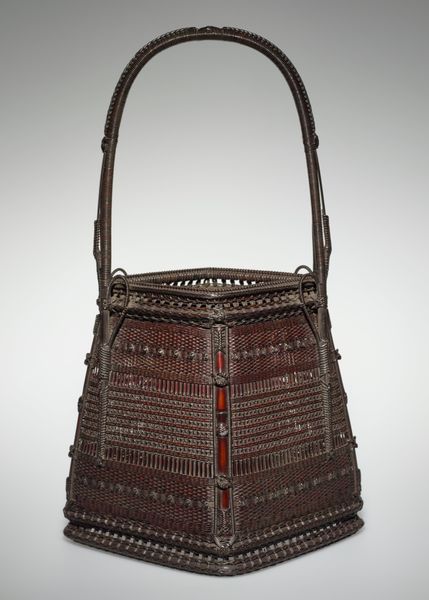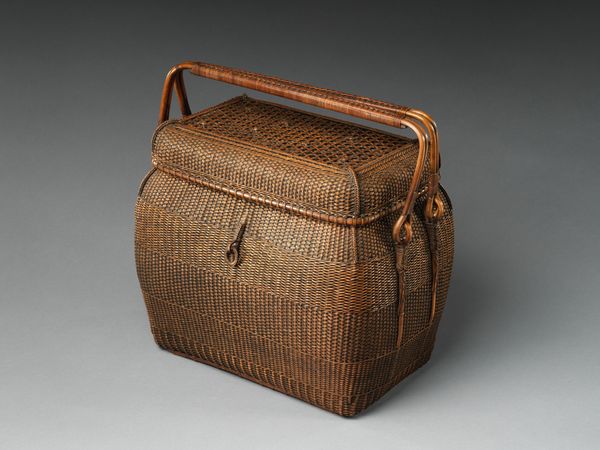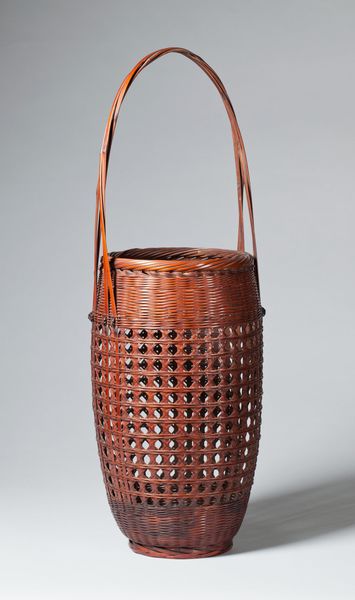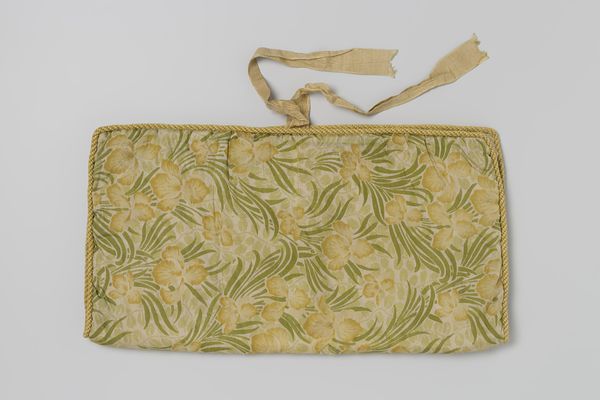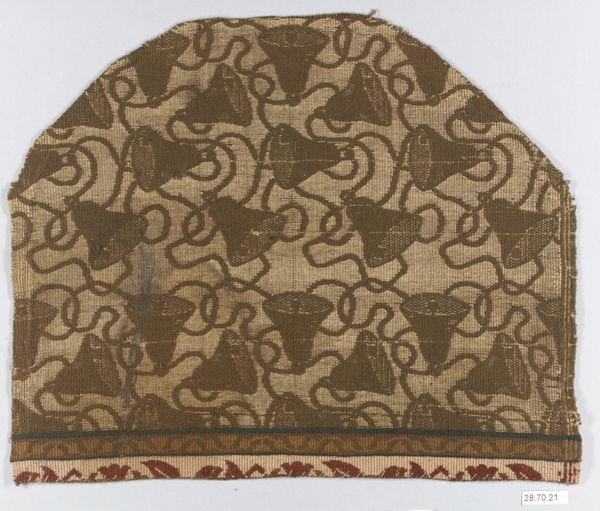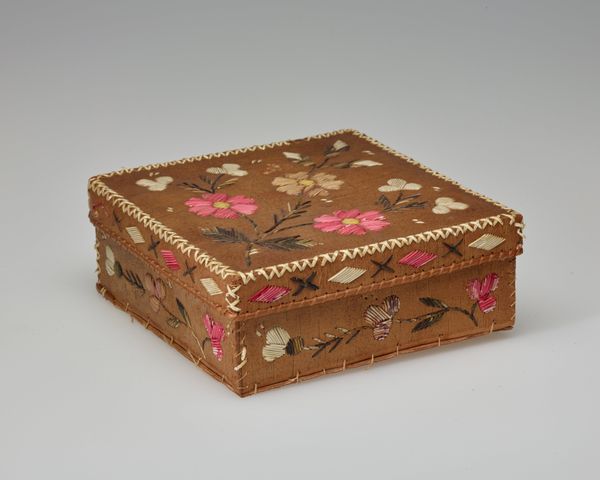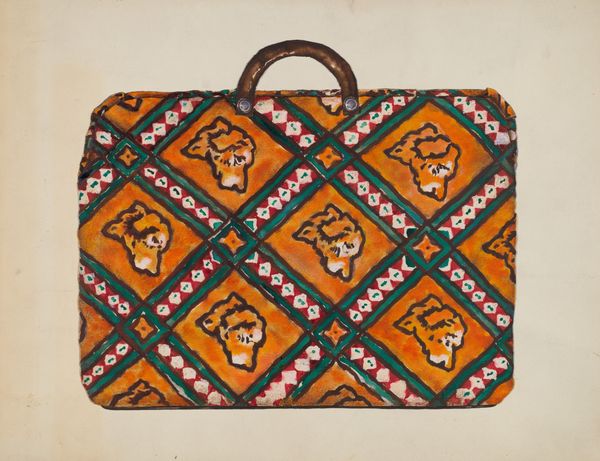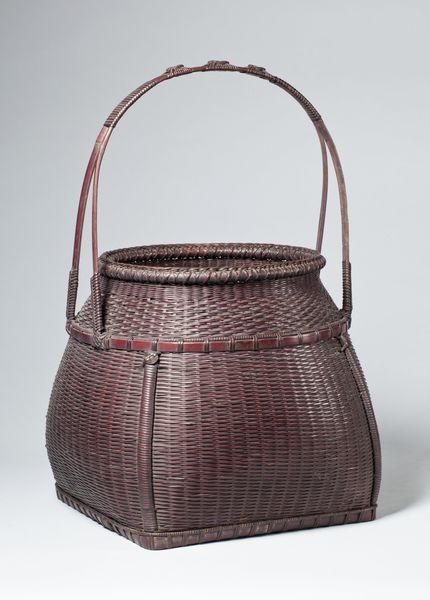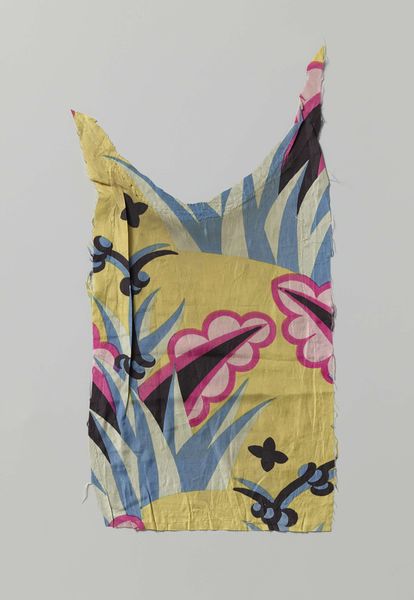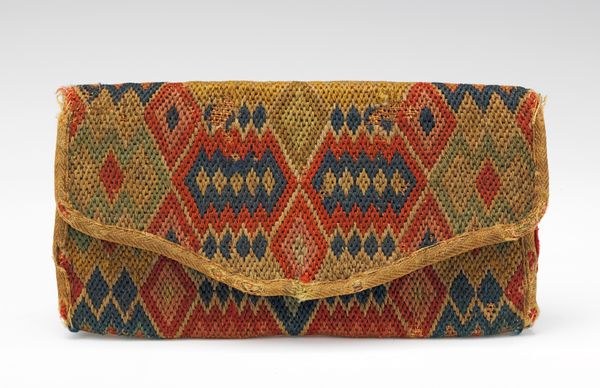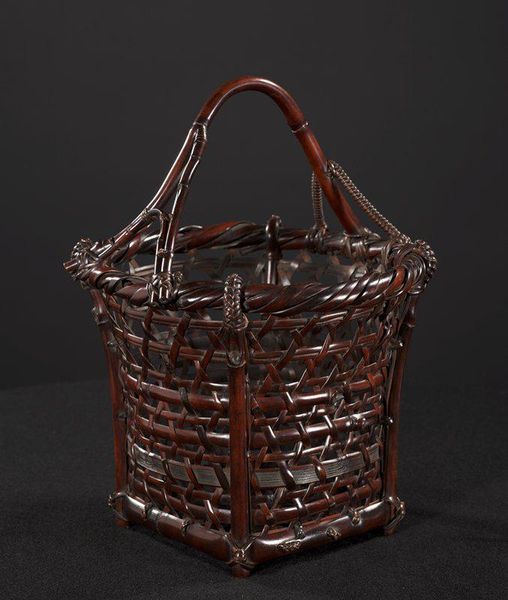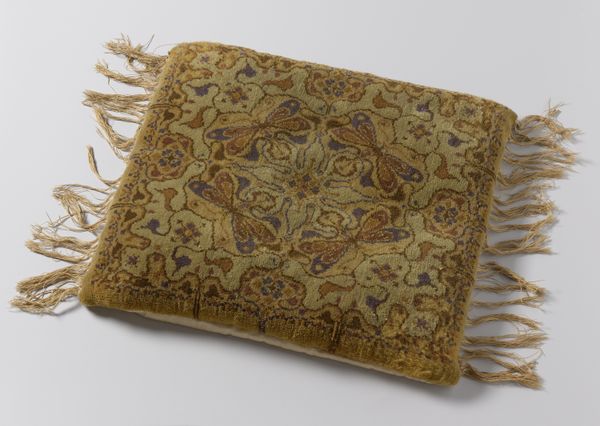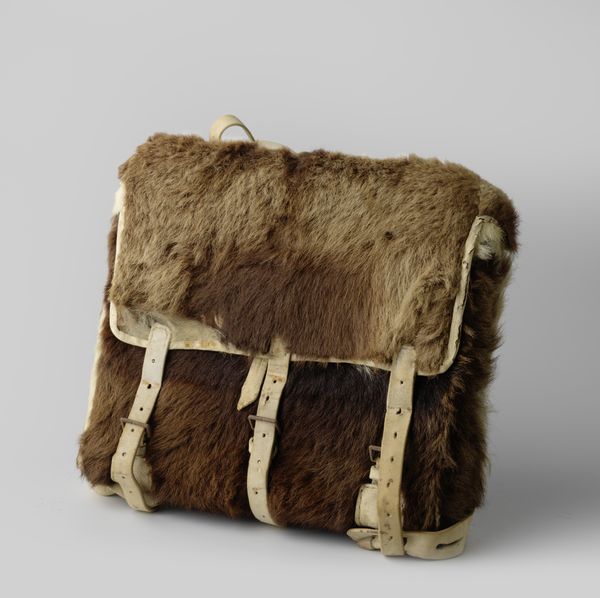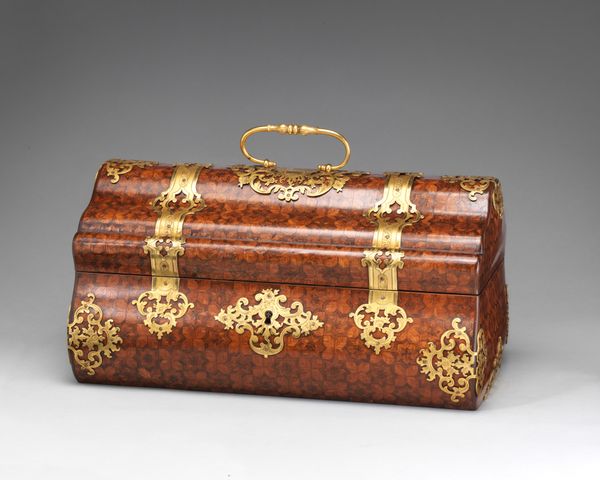
fibre-art, weaving, textile
#
fibre-art
#
fashion mockup
#
weaving
#
product fashion photography
#
textile
#
clothing promotion photography
#
fashion and textile design
#
clothing photography
#
fabric design
#
textile design
#
decorative-art
#
layered pattern
#
retail photography
#
clothing design
Copyright: Public Domain
Editor: Here we have the "Carpetbag," made between 1863 and 1867. It's a textile piece, currently housed at the Metropolitan Museum of Art. I’m really struck by how sturdy it looks and the detailed needlework, particularly its resemblance to more ‘high-art’ tapestries of the time. What’s your take on this piece? Curator: The ‘Carpetbag’ presents an interesting commentary on material culture of the era. What’s particularly compelling is its blurring of boundaries: using ‘lowly’ carpet remnants, traditionally domestic craft, to fashion a portable container – something essential for commerce and travel. Consider the hands involved in its making. Editor: So you're saying it's not just about the bag itself, but the whole production process? Curator: Precisely. Think about the labor that went into producing the carpet itself: the weaving, the dyeing of the threads. Then, consider the added labor of repurposing that textile into a functional object, this bag. How does this object speak to a growing availability of material? Who would’ve made and purchased such a piece and why? What materials did they have access to? Editor: That makes me think about how resourceful people were back then, using every bit of material. The bag's survival really highlights the durability and the value placed on handmade items, before mass production really took hold. It kind of complicates our easy ideas of the Industrial Revolution, right? Curator: Indeed. It’s easy to get lost in thinking of carpetbags only in a symbolic way in terms of political actors of the Reconstruction Era, when the reality is the objects themselves were complex statements about materiality and labour. It reveals much about American ingenuity. Editor: I never really considered that angle before, that the bag wasn't just a bag but also the sum of so many other steps. It adds a whole new level of understanding! Curator: Absolutely. By examining the process and materials, we gain a deeper appreciation for the ‘Carpetbag’ and its place within a larger social and economic framework.
Comments
No comments
Be the first to comment and join the conversation on the ultimate creative platform.
